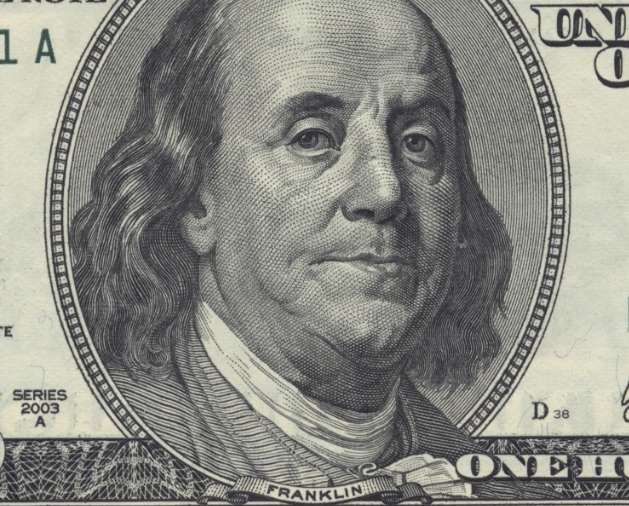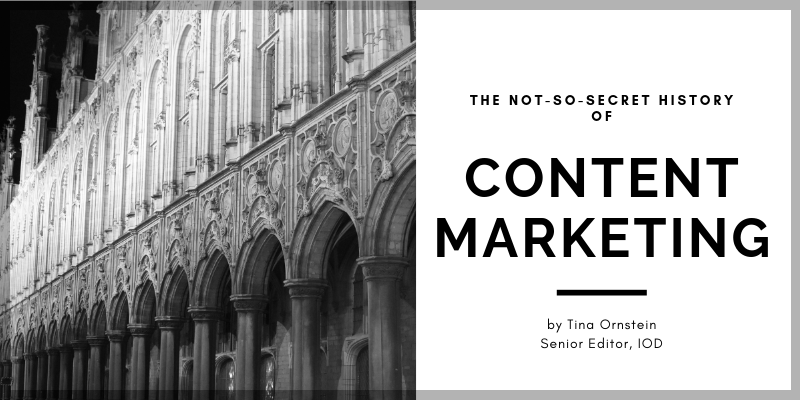It’s always tempting to think that whatever we’re doing in the bright, shiny world of the 21st century is unprecedented, groundbreaking, disruptive. But I have a confession to make: Although my career is firmly-rooted in high tech and I can’t get enough of engaging with the latest and greatest technology and business trends, my first love is history and my academic degree is in that domain. So indulge me for a few minutes as I explore the historical roots of the content marketing that drives customer engagement and brand building today.
Expand Your Definition of Content
If I really wanted to be radical, I’d take you back to cave dwellers sitting around a fire after a hard day of hunting and gathering. What are they doing before they retire for the night? They’re telling stories. Using stories to engage people is part of our DNA as homo sapiens. There isn’t a human society anywhere the world throughout the ages that has not valued its story-tellers. Content marketers who know that the essence of good content and effective brand building is telling engaging stories can trace themselves back to prehistoric times.
A somewhat more recent example, however, that is often cited as an early precursor of modern content marketing is Benjamin Franklin’s Poor Richard’s Almanack. Published uninterruptedly from 1732 to 1758, the Almanack provided exactly the content that its American colonial audience hungered for—weather forecasts for the farmers, domestic tips for the housewives, puzzles for the entertainment of all, and witty sayings to amuse and edify. The Almanack was a commercial success in and of itself and, more importantly, built Benjamin Franklin’s reputation (or dare we say brand?) as an inventor, politician and publisher.

Let’s jump ahead now to the turn of the 20th century. In 1900, the first Michelin Red Guide was published and distributed for free to French car owners, of which there were less than 3,000. In order to increase the number of motorists (and hence the number of tires that the Michelin brothers could sell), the Guide provided value-add content such as maps, locations of car mechanics and gas stations, and restaurant and hotel recommendations. Today the guides cover cities and countries around the globe and continue to build the Michelin brand.
One of the first examples of non-print content marketing was the incredible popularity of Proctor & Gamble’s serial radio shows in the 1930s. The genre came to be known as “soap operas” because P&G leveraged these shows to advertise and promote their soap brands. With the introduction of television in the 1950s, using TV broadcasts as a content platform for effective brand-building became an important mainstay of the marketing industry.
Content Marketing Goes Digital
And now we enter the digital era. As access to the Internet became universal, online content of all forms became a crucial marketing tool. In 2004, Microsoft launched Channel 9, the first major corporate blog. It’s goal was to give Microsoft developers a direct channel to customers and other target audiences, therefore extending the Microsoft brand beyond Bill Gates.Today Channel 9 is an active community site that features multimedia content in addition to blog posts.
It was not long before high-tech companies began leveraging the power of online videos to reach their audience. One of my favorite examples is the video starring John Cleese as Dr. Twain Weck of the Institute for Backup Trauma. Released in 2005 to promote LiveVault’s automated disk backup solution, it went viral and generated close to 300,000 downloads during the first three months. It is still hilarious.
According to the Content Marketing Institute, in the year that it was established (2010), 88% of all brands were using content marketing and 25% of marketing budgets were dedicated to content marketing. Study after study showed that marketing based on value-add content had a significantly higher ROI than traditional advertising channels.
Back to the Future
So now that we’re safely back in 2019, let’s take a brief peek into the future. Our experience, for example, is that content consumers continue to seek quality and authenticity. Use of statistics, long-form (more than 2,000 words), thought leadership, and originality all add to content credibility, boosting engagement and sharing.
Another trend that seems to be shaping the future of content is visuals. According to Cisco, by 2022 video, webinars, and webcasts will account for 82% of all internet traffic. Content marketers ignore this trend at their own peril — and don’t forget to keep your video content mobile friendly.
The growing adoption of smart speakers will also have an impact on content marketing. We learn from TechCrunch that during the course of 2018 the number of installed smart speakers in the US grew to 66 million, up from 37 million in December 2017. With more and more people using voice search, for example, companies will have to adapt their content SEO strategies accordingly.
What content trends are you most excited about? Leave your thoughts in the comments below.

